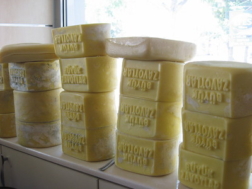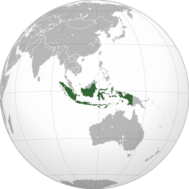Search Results for: India
10 results out of 2488 results found for 'India'.

TÜRKIYE DAIRY PRODUCTION FALLS AS INDUSTRY STRUGGLES WITH INFLATION AND DEPRECIATING LIRA

ASIAN PAINT REGULATORY ROUND UP – INDONESIAN EXTERIOR PAINT STILL USES LEAD, WARNS WORLD BANK

ASIAN PAINT REGULATORY ROUND UP – CHINA CRITICISES EUROPEAN TITANIUM DIOXIDE ANTI-DUMPING DUTY
JAPAN PAINT SECTOR STRUGGLES TO SELL TO PRIVATE CONSUMERS, BUT B2B SEGMENT IS ROBUST
Japanese paint manufacturers are facing challenging times – reducing costs where possible as the price of inputs rise, to reduce pressure on final product pricing as they deal with a local consumer market with declining consumption. Economic pressures caused by geo-political turbulence and the weak Japanese yen are both creating challenges, according to industry experts.…
PAKISTAN GOVERNMENT, EXPORTERS HAVE CONFLICTING VIEWS ABOUT TEXTILE INDUSTRY’S FUTURE OUTLOOK
Prospects of a bumper cotton crop on Pakistan this year (2023) and a planned extension to December 2027 of the country’s European Union (EU) GSP+ trade benefit status has raised hopes for increased sales by the Pakistan clothing and textile sector within the country’s government (1).…
INDIAN CLOTHING SECTOR IS ENTHUSIASTIC MECHANISER – BUT JOBS ARE SAFE, SO FAR
The Indian clothing manufacturing sector is investing enthusiastically in new technology, but digitisation, AI, robotics and automation has yet to see jobs being shed on a significant scale, said industry experts. AI-powered automation of processes along with the abundant availability of skilled labour, is preparing the Indian garment industry to gain market share in the global trade, argues Harminder Sahni, managing director of Gurgaon, India-based consultancy Wazir Advisors: “Sampling, colour matching and approvals from foreign buyers, which used to be very time consuming, is now happening more and more online,” he told Just-Style.…
HIGH INDIAN TEXTILE COMPANY OFFERS VISION OF INTEGRATED DIGITAL PLATFORM LINKING CLOTHING MANUFACTURERS
A wide variety of small garment orders for manufacturers could be made practical to manage through newly created digital systems developed in India, which can also reduce waste and conserve the environment.
“From growing cotton to dying fabric, 6,000 to 7,000 litres of water is spent on making one garment and eventually 30 percent of [apparel products] end up in landfills,” Gunish Jain, CEO of BlueKaktus, a fashion technology and garment manufacturing company, based in New Delhi, told Twinn, “Big brands have been ordering far in excess of their requirement but that is now changing.”…
INTERNATIONAL REGULATORY ROUND UP – ICCO WARNS OF ONGOING GLOBAL COCOA SUPPLY DEFICITS
The International Cocoa Organisation (ICCO) has predicted that the chocolate industry will continue to face cocoa supply deficits, with its latest quarterly assessment predicting that for 2022/3, there will be 99,000 tonnes more grindings than cocoa production. As a result, global stocks will fall to 1.744 million tonnes, amidst declines in output from key production hubs Ghana and Côte d’Ivoire.…
VEGAN CHOCOLATE BOOMS WORLDWIDE, WITH BRANDS INVESTING IN QUALITYVEGAN CHOCOLATE BOOMS WORLDWIDE, WITH BRANDS INVESTING IN QUALITY
With consumers becoming increasingly health conscious worldwide, demand for vegan chocolate, replacing dairy ingredients with plant-based materials, is growing fast.
According to US-based Grand View Research, the global vegan confectionery market – dominated by chocolate – is anticipated to generate USD2.62 billion in annual revenues by 2030, expanding at a compound annual growth rate (CAGR) of 9.9% from 2023’s USD1.23 billion.…
ASIAN PAINT AND COATING REGULATORY ROUND-UP – NEW ZEALAND PLANS TO SLASH LEAD CONTENT IN PAINTS
The New Zealand Environmental Protection Authority (EPA) has called for comments on planned reductions to allowable lead levels in paints, and in art materials such as chalk, crayons, and felt-tip pens.
The country’s current lead level limit for paint is 0.1% (1,000 parts per million/ppm) and the proposed changes would reduce this to 0.009% (90ppm), in line with countries including Australia, Canada and the United States, the EPA said in a note.…